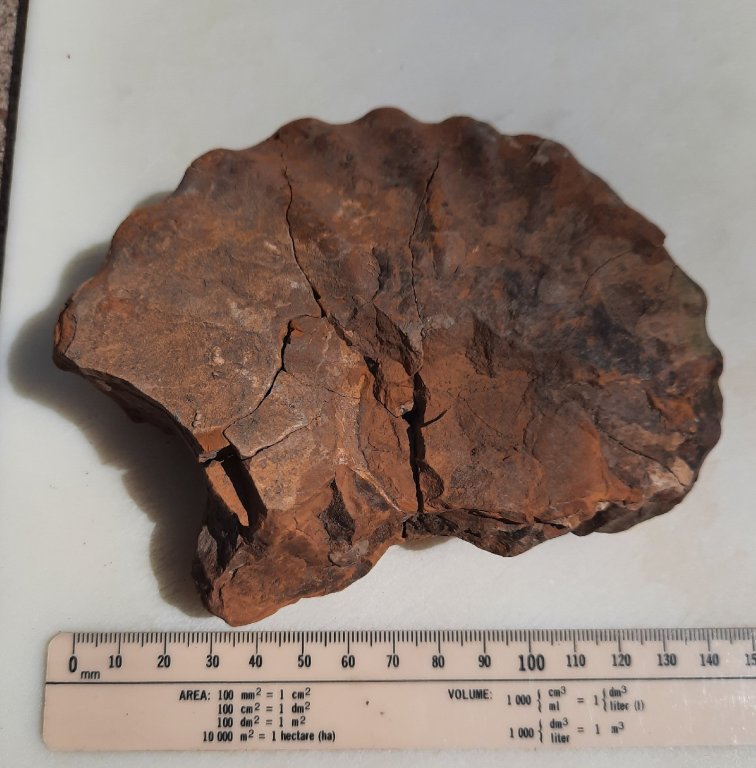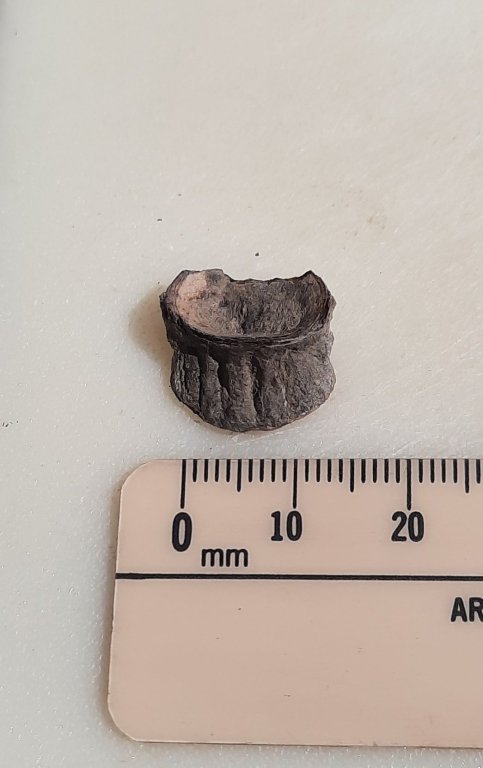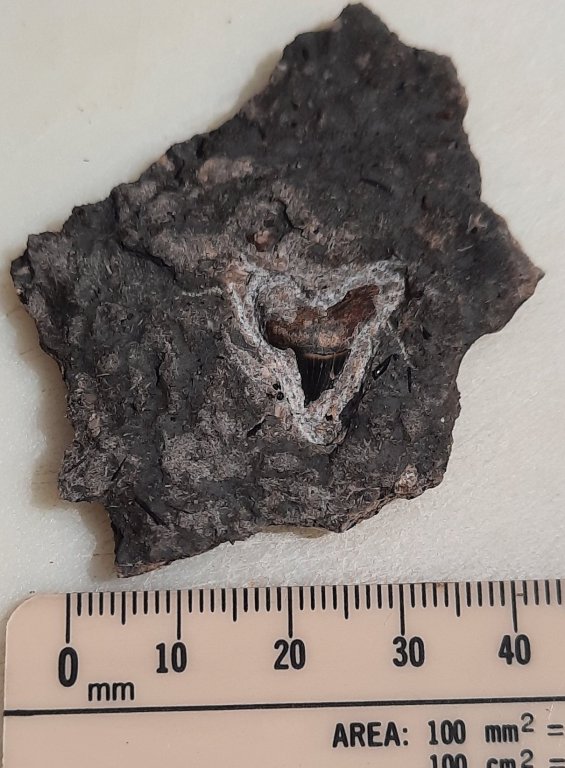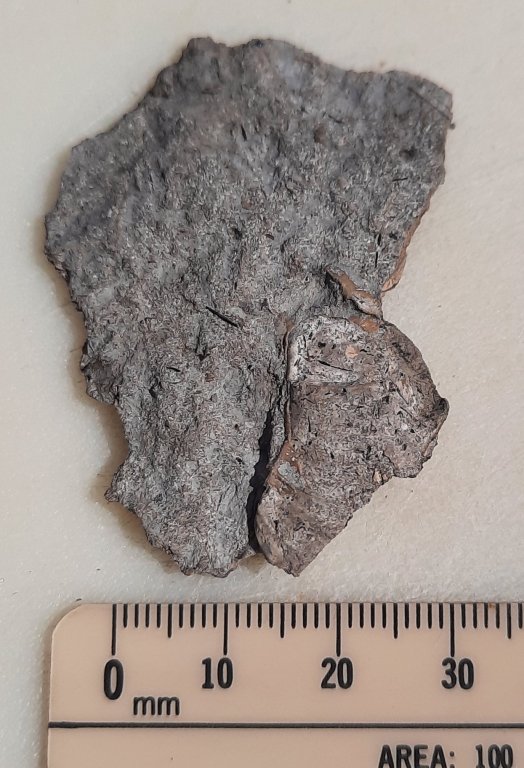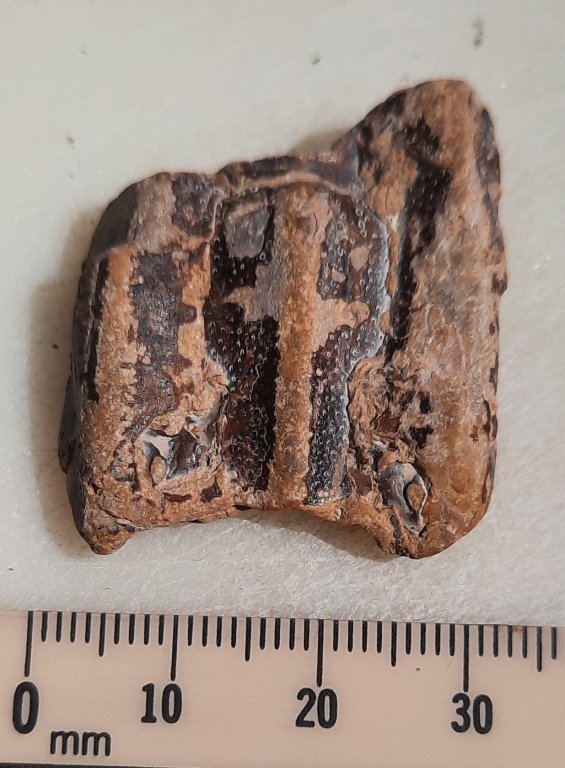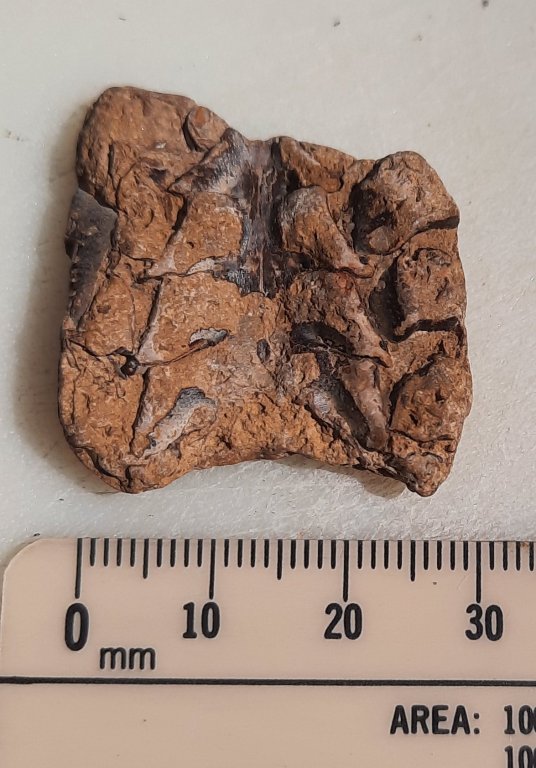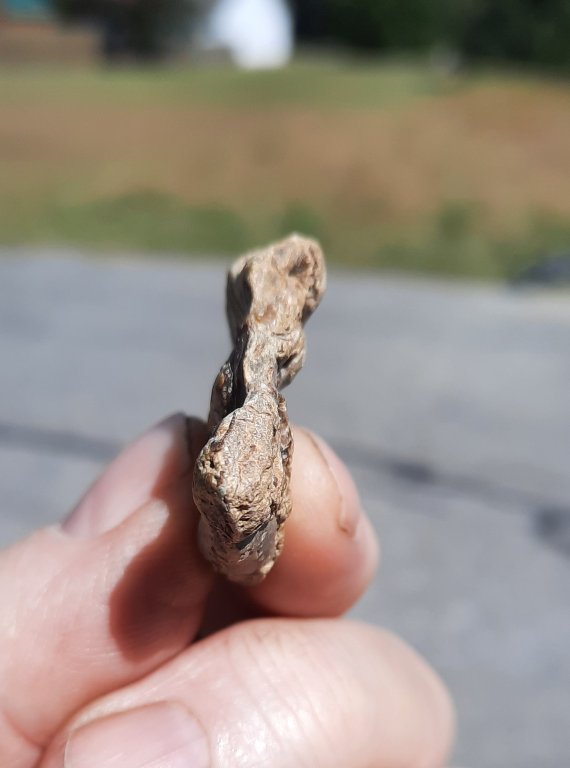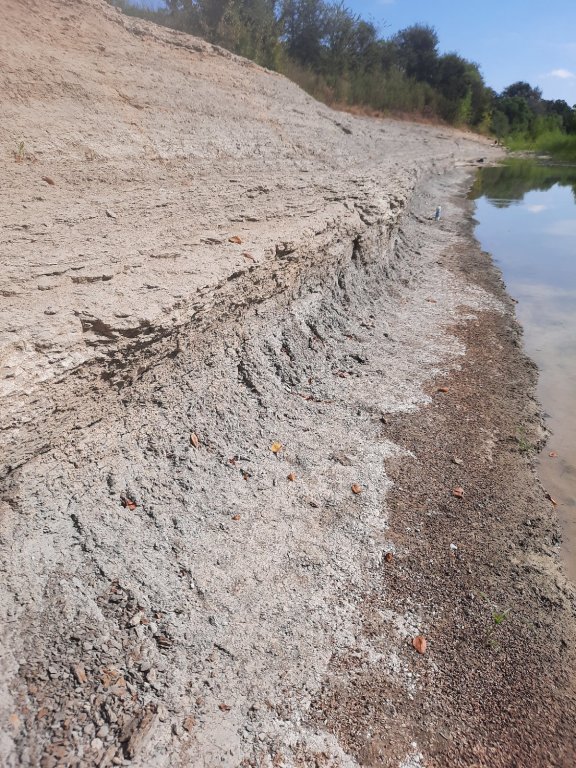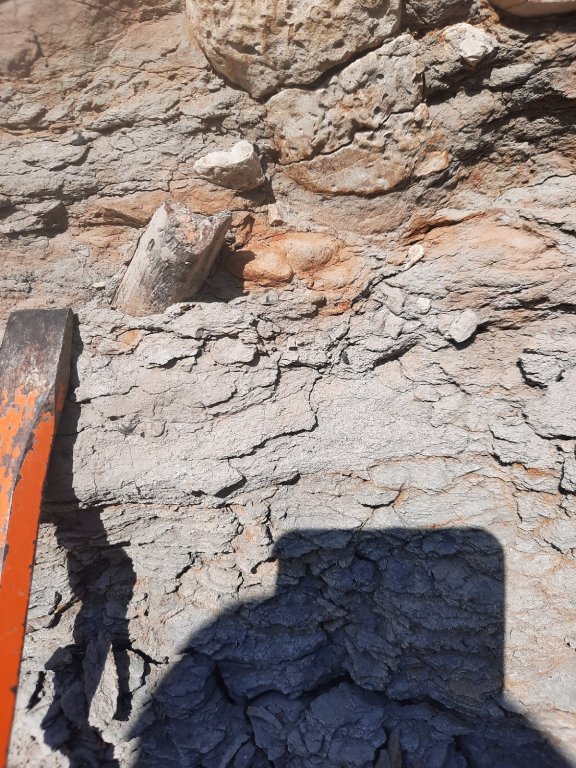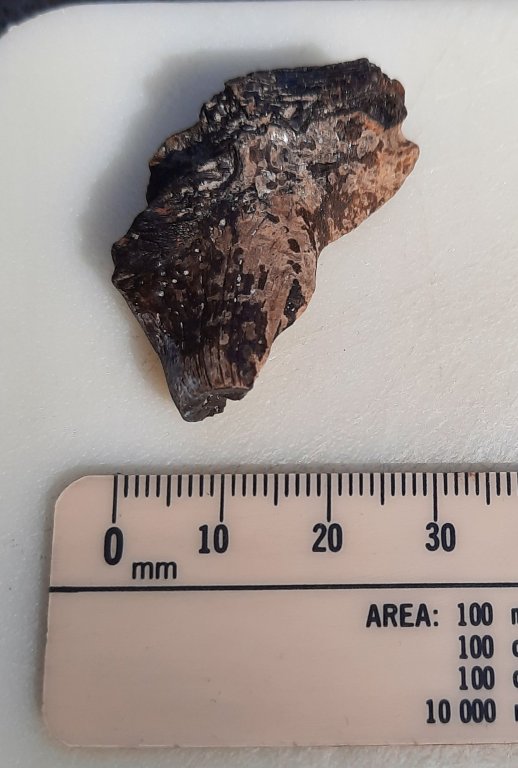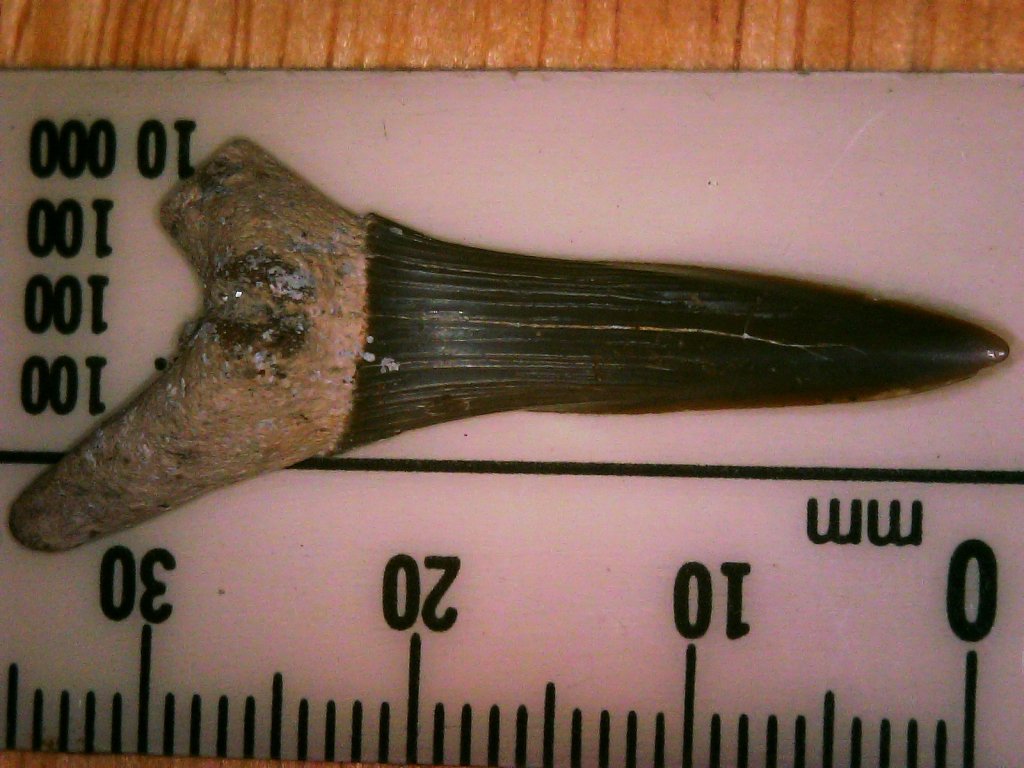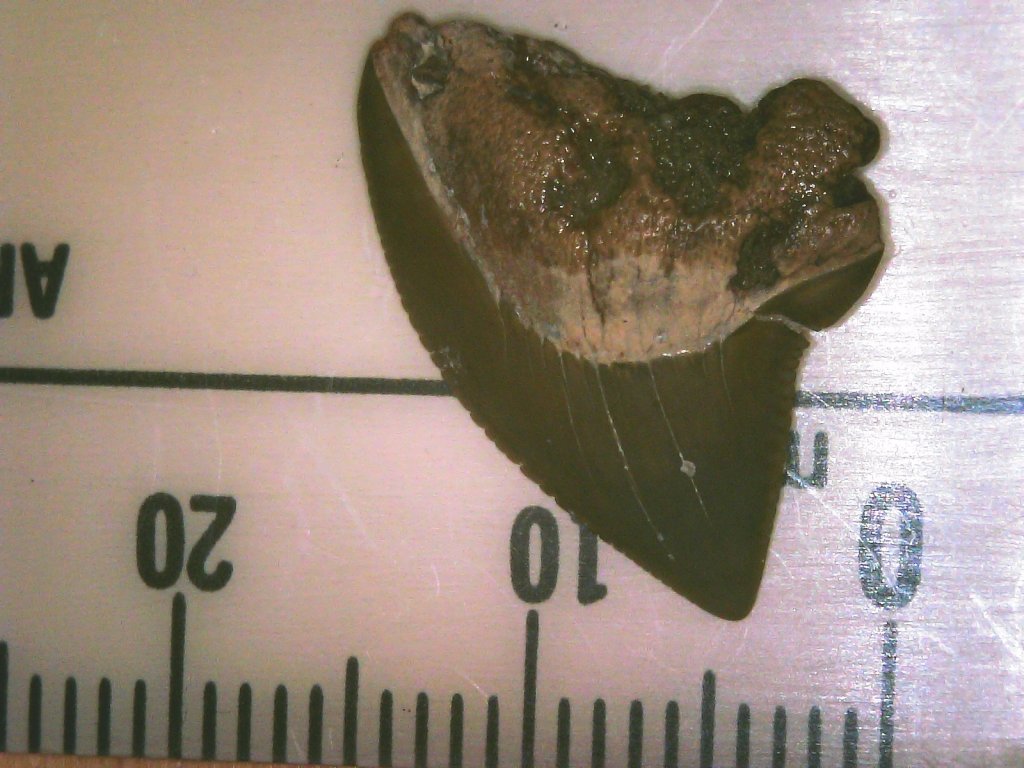I spent yesterday morning at the North Sulfur River. I had never made a trip to the upper part of the river, and decided to do that yesterday. I spent all morning walking (and crawling) the river, but found nothing. When I try out a new spot, I’ve made it a practice to find a nearby second spot to look at, in case the first one doesn’t pan out at all. Sherman isn’t too long a drive to the west of this upper river spot, so I designated a new section of Post Oak Creek that second spot, and drove there after I left the river.
I wasn’t too optimistic about what I might find in this new section of Post Oak Creek. The conditions and cirmcumstances seemed all wrong. I didn’t arrive there until after noon. Post Oak Creek is a long enough drive from home that I knew I wouldn’t be able to stay long. Plus, it’s been quite a while since there was a good rain here. Post Oak Creek gets very picked over when there isn’t new water uncovering stuff. But I figured if I found anything at all under these conditions, that would let me know this is a good spot, and I should return after a good rain.
I also had the thought that if I didn’t find much on gravel bars, I would spend some time searching matrix here. I had never done that at all at Post Oak Creek. I hiked down the creek and hunted a single gravel bar. I never made it past that gravel bar, and ended up finding much more than I expected, and only briefly looked at matrix there. For those so inclined, here’s today’s version of “Find the fossil”. Click the photos to be able to zoom in and get a closer look.

I actually took 14 in situ photos, but culled to these 8 to post.

Here is what I brought home. I shouldn’t pick up so many broken teeth, but I can never seem to resist a fossilized tooth.

Here is the first of the two largest teeth. These are among the largest teeth I’ve found in my short time fossil hunting.

And here is the other larger tooth. Neither of these teeth is in perfect condition. But, considering how many teeth I’ve found this year that were so small they required a microscope to photograph, I was still thrilled about finding these two.
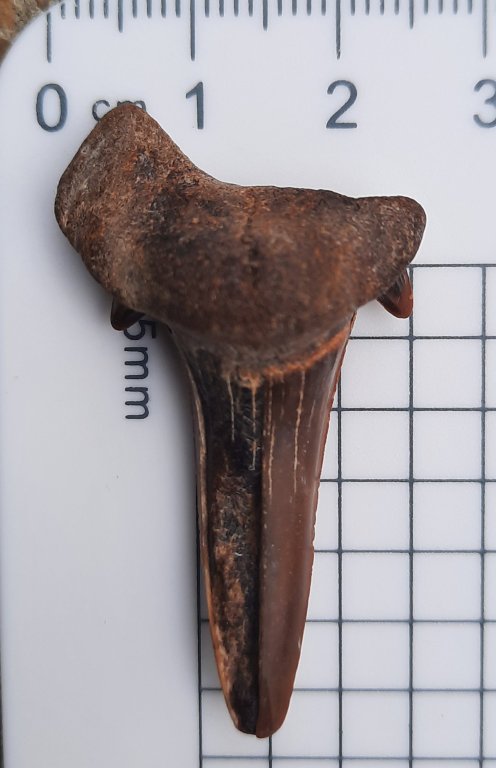
Lots of cracks in this one, but it’s in one piece, with the root intact. A real beauty, I think.

The only Ptychodus tooth of the day.

Half the root missing, but still a pretty tooth.

This looks to me more like a crinoid segment than anything else, though I’ve never found crinoids in this area before. The thought in The Fossil Forum is that it really is a crinoid segment, and came from further west, brought in with construction material.
This is plainly a bone, but I can’t tell what it’s from. Perhaps someone in The Fossil Forum will recognize it.

This bone is as brown as any fossilized bone, but the porous part of it hasn’t become completely filled in yet, so I assumed it must be a modern bone. It seemed like a good candidate to take home and do the flame test on. A flame didn’t produce any smell, but I did eventually get smoke.

And this is obviously a modern bone, but it was so interesting looking I picked it up anyway. I had no idea what it was. It was ID’d in The Fossil Forum as pharyngeal teeth from some kind of fish.

With my short time at the end of the day looking at matrix, I found these two teeth. I also spotted a couple of gastropods in giant rocks, but freeing them would have taken more chiseling than I was willing to tackle that late.
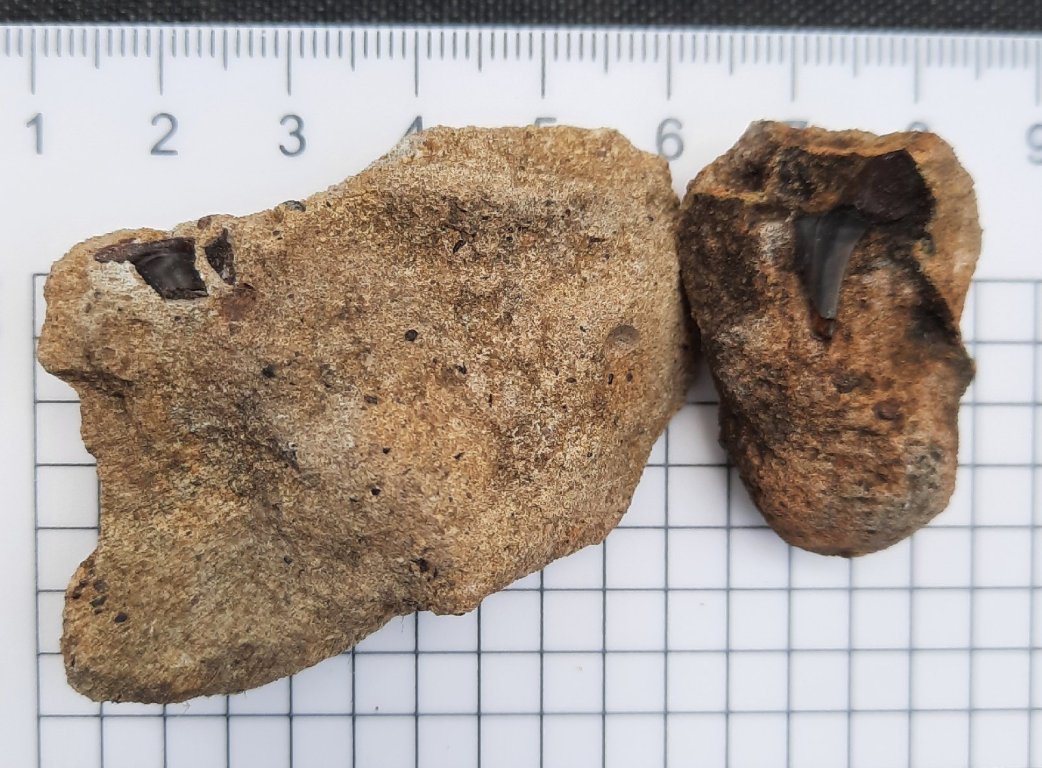



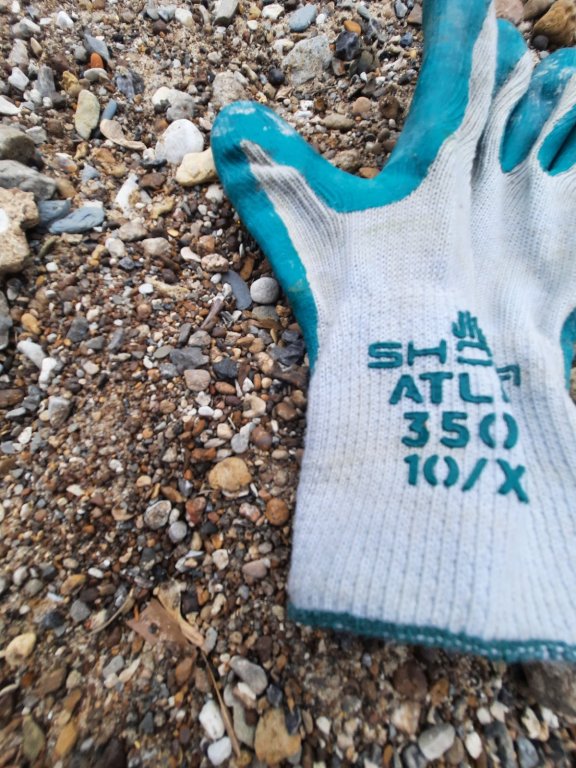
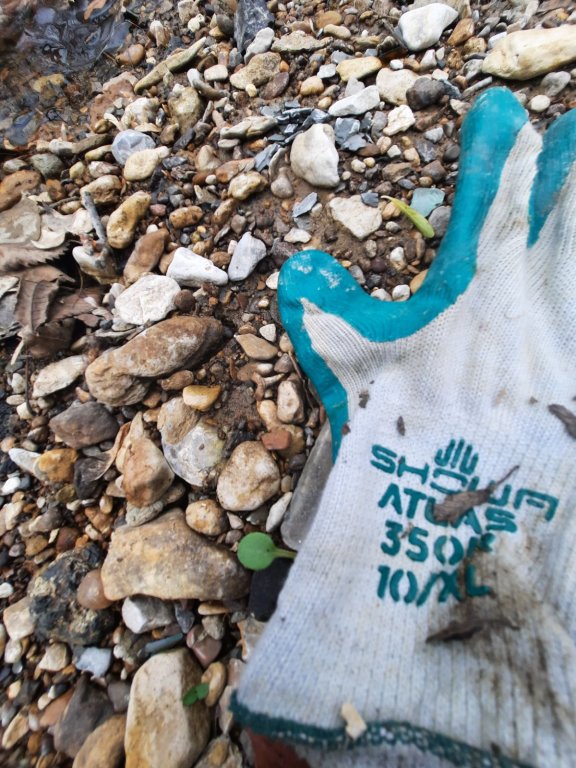
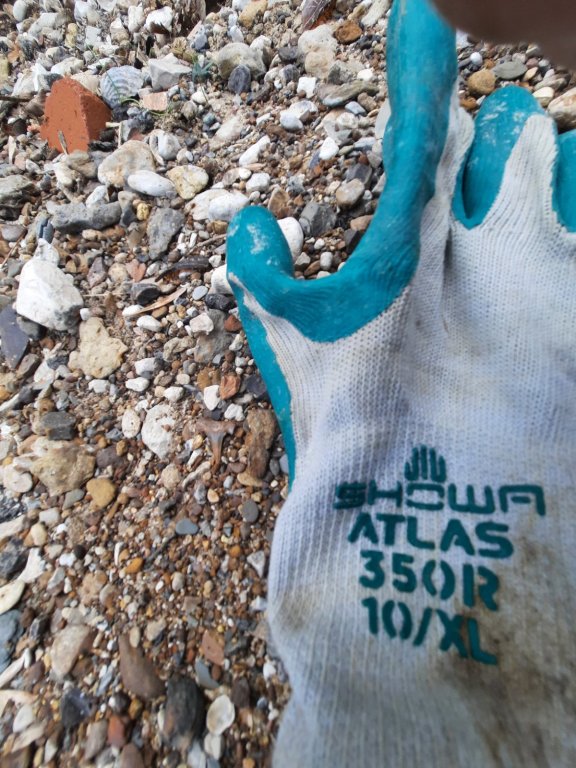










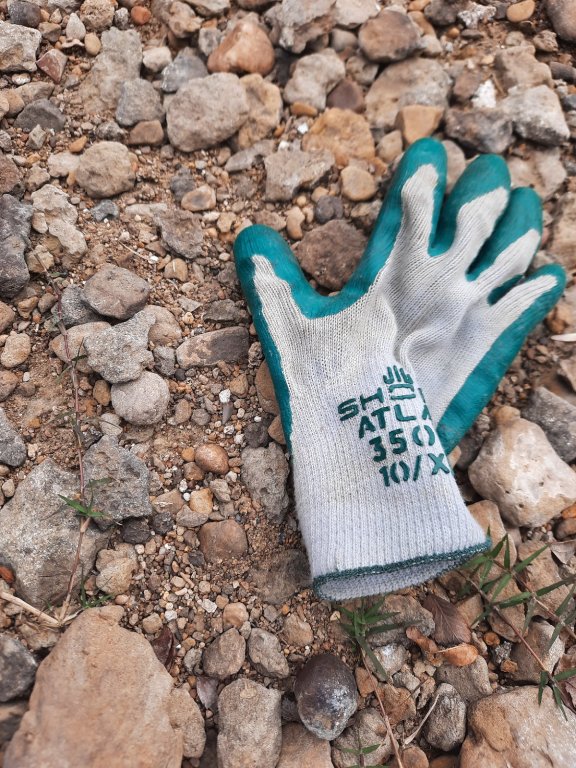



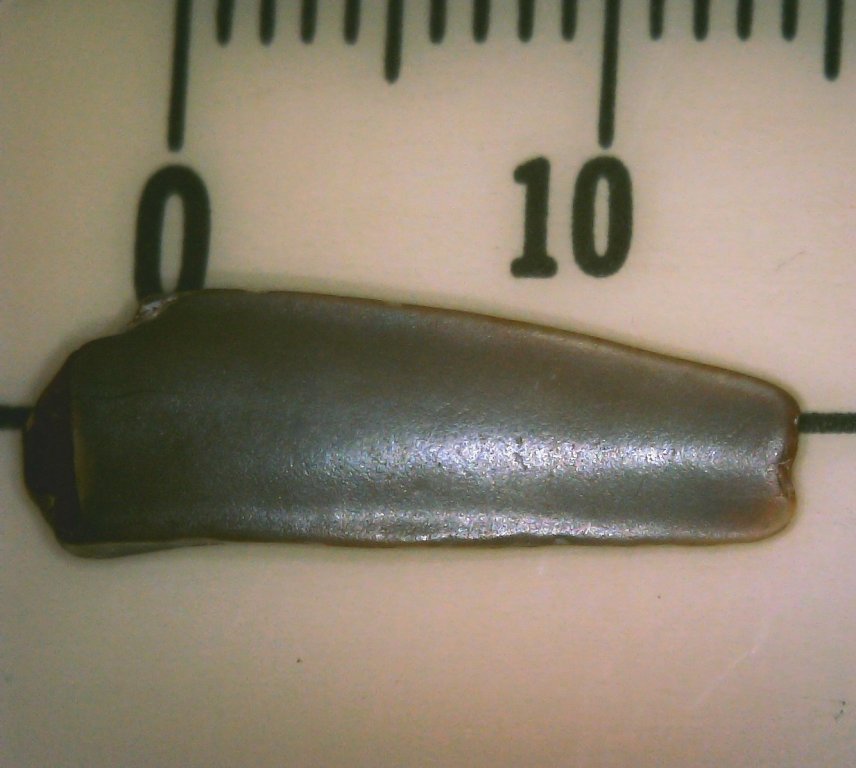










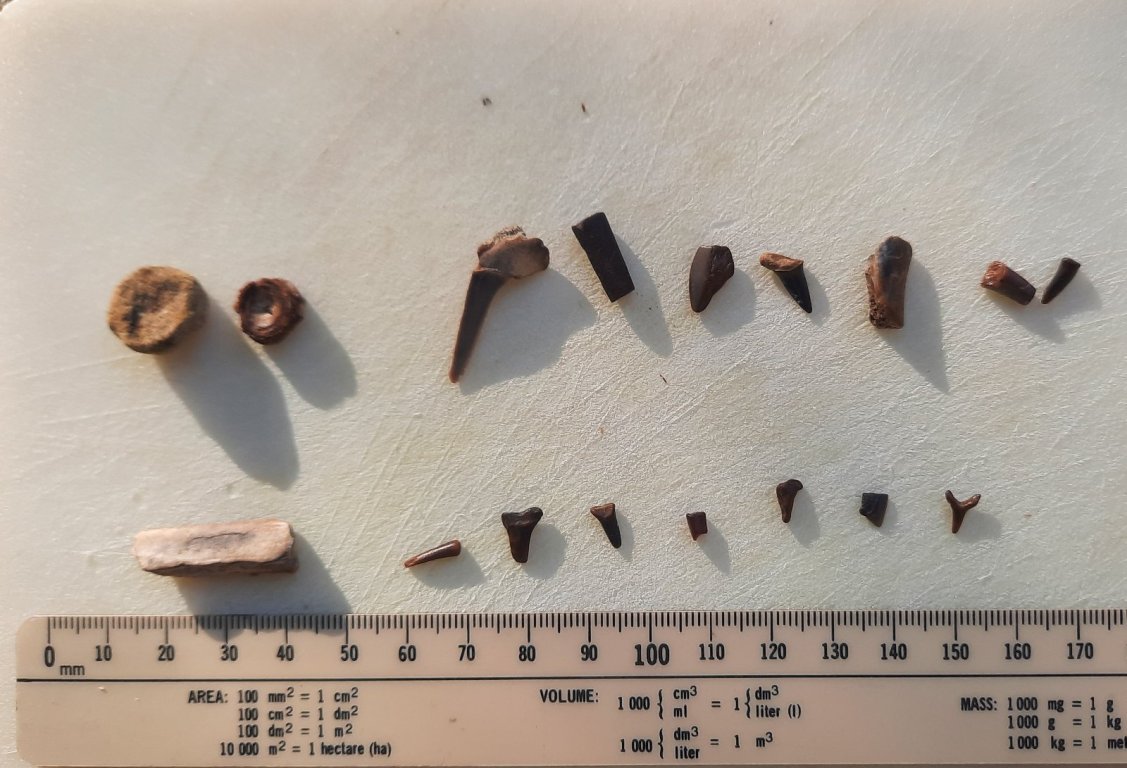
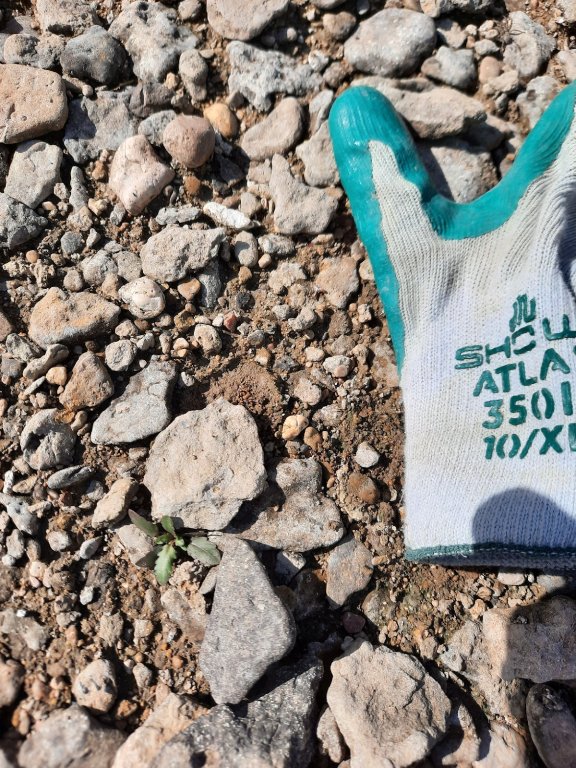



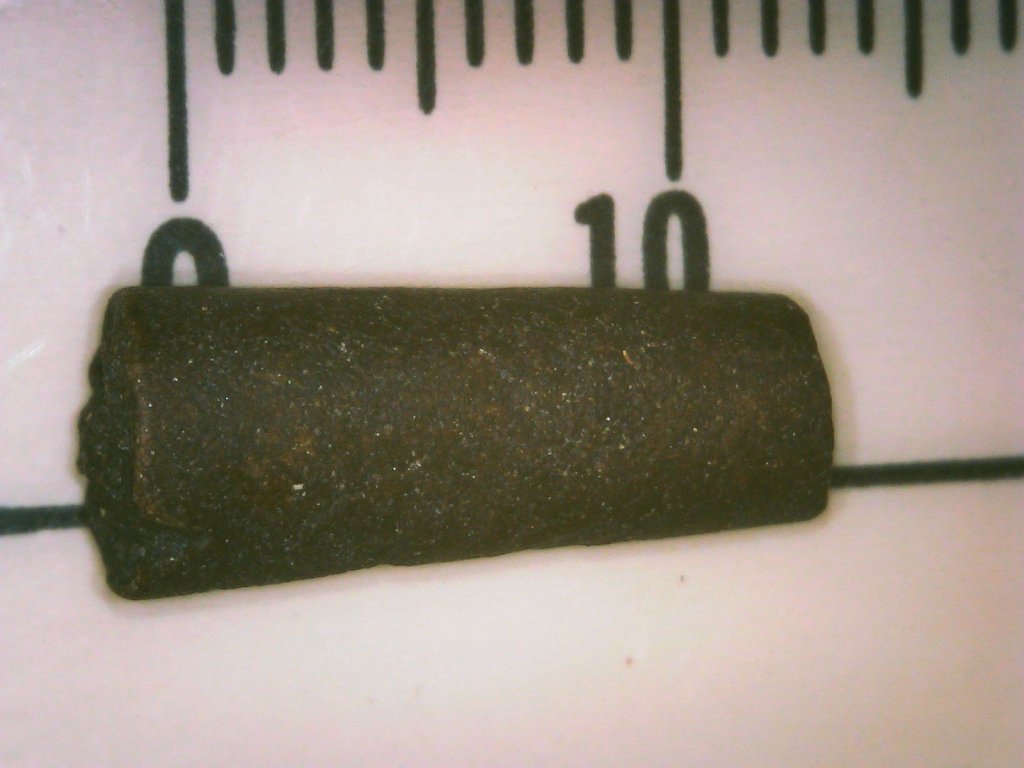

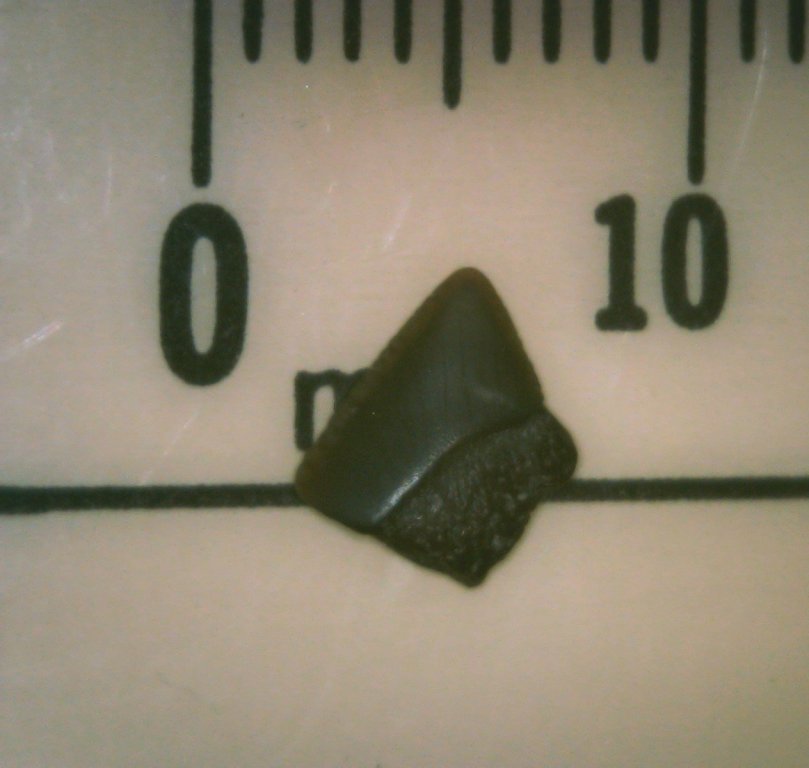

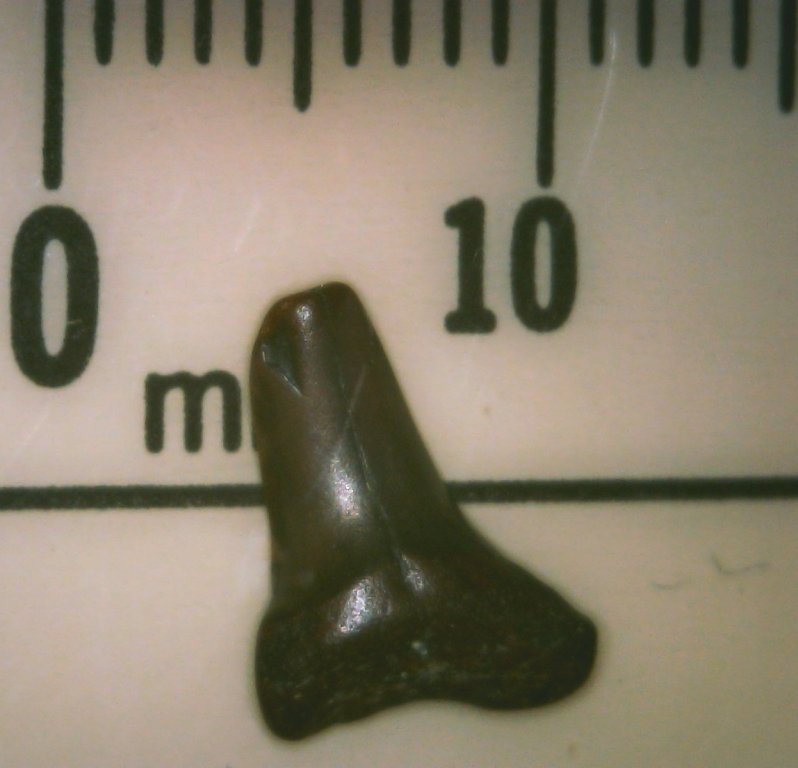
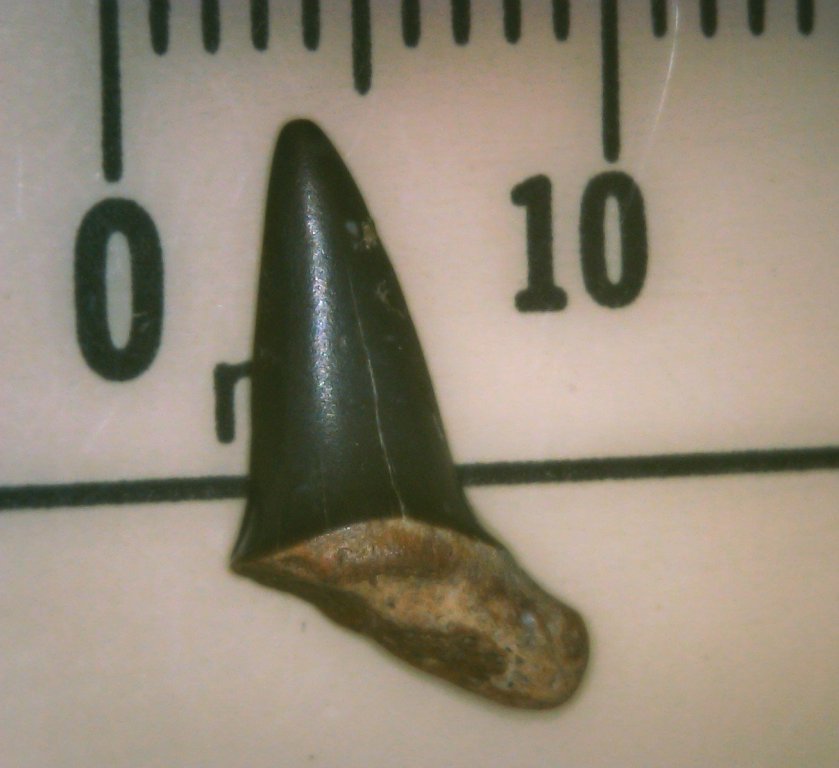






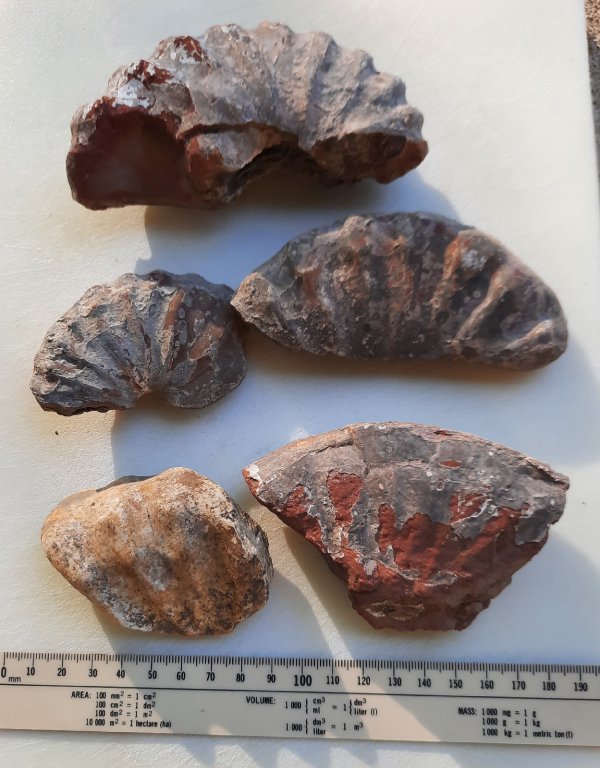
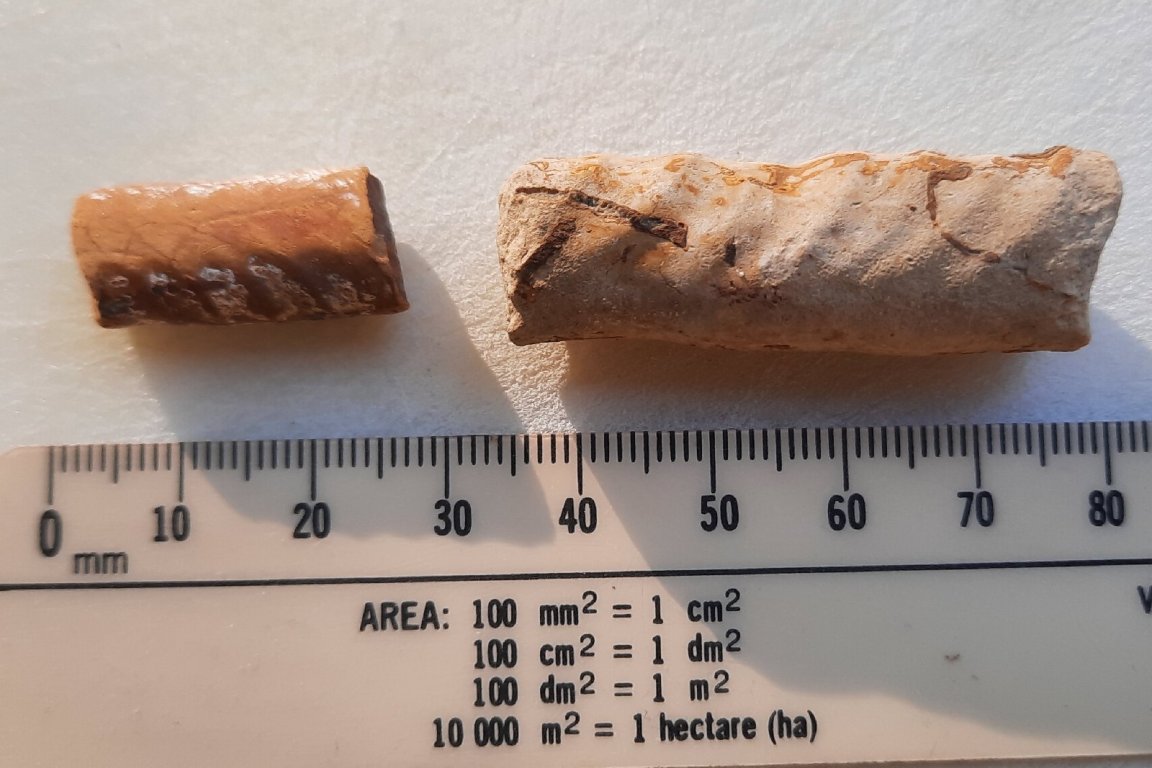

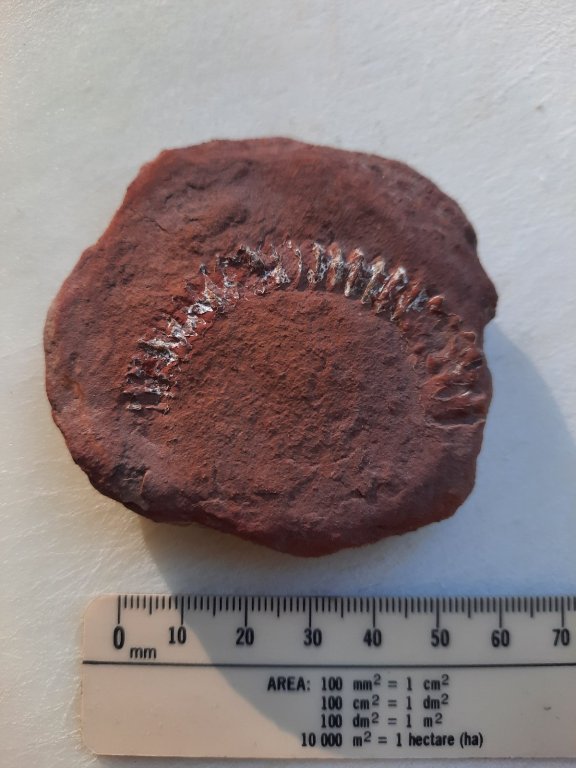
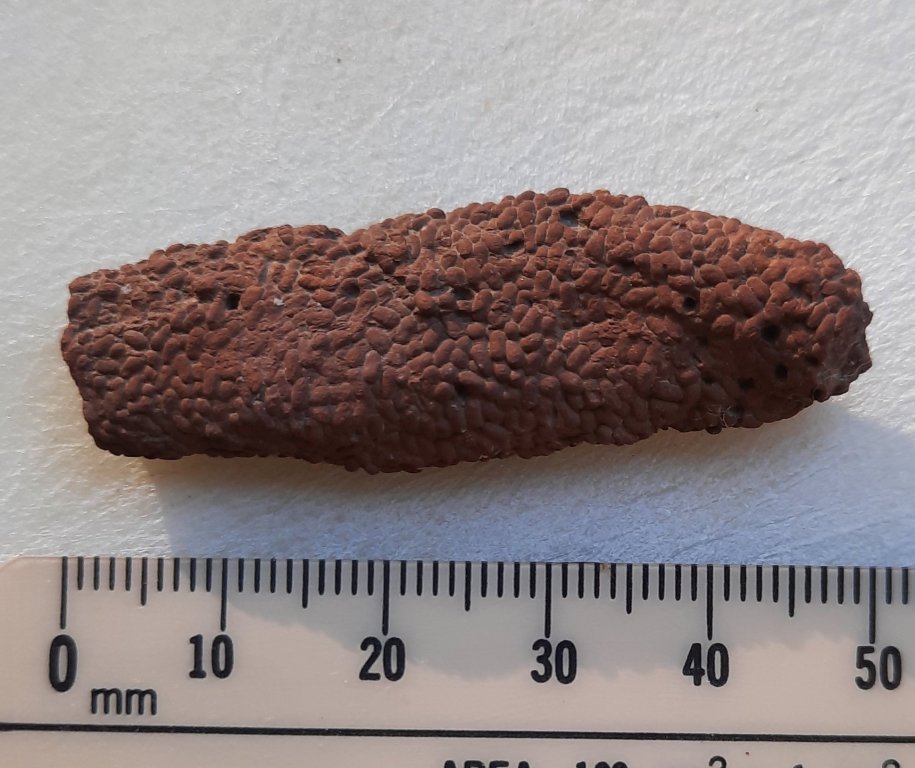



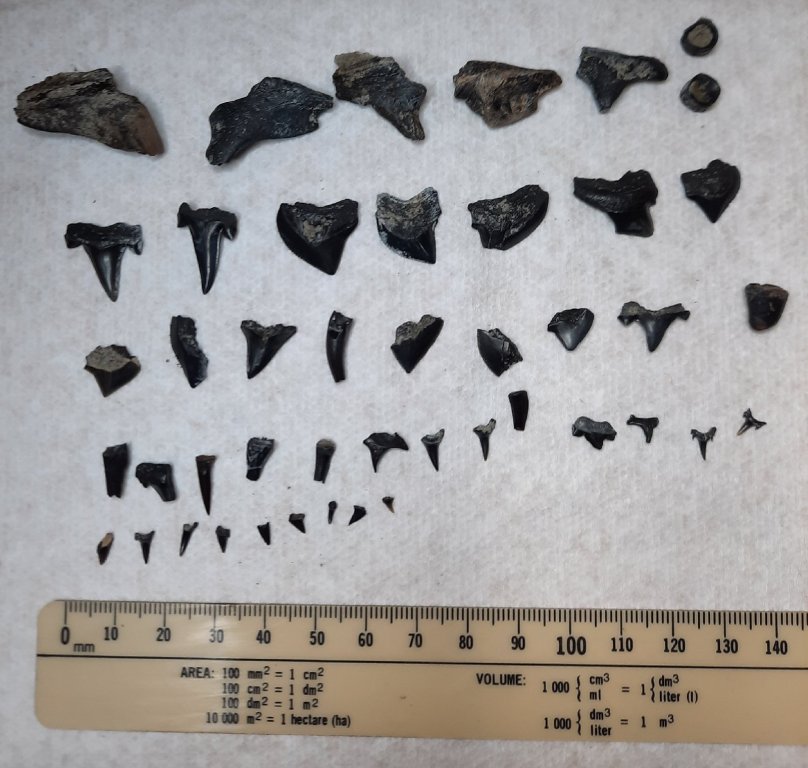
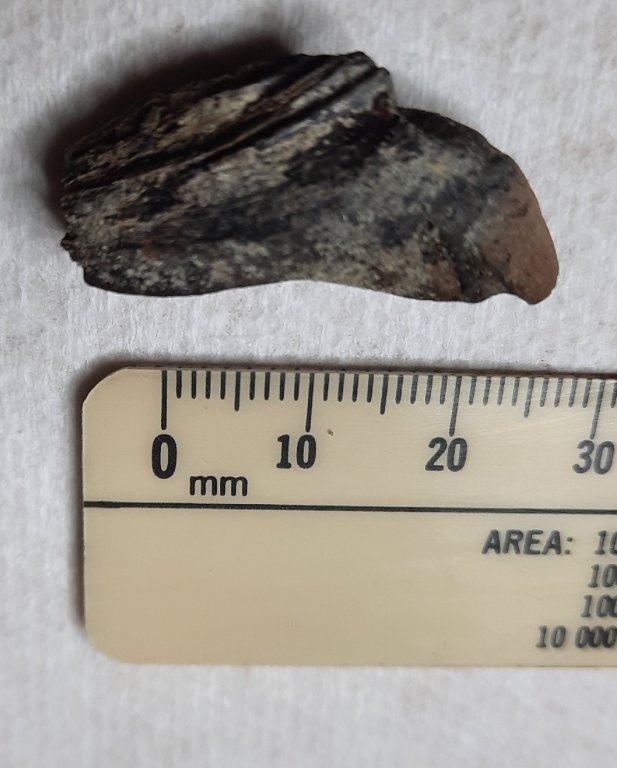



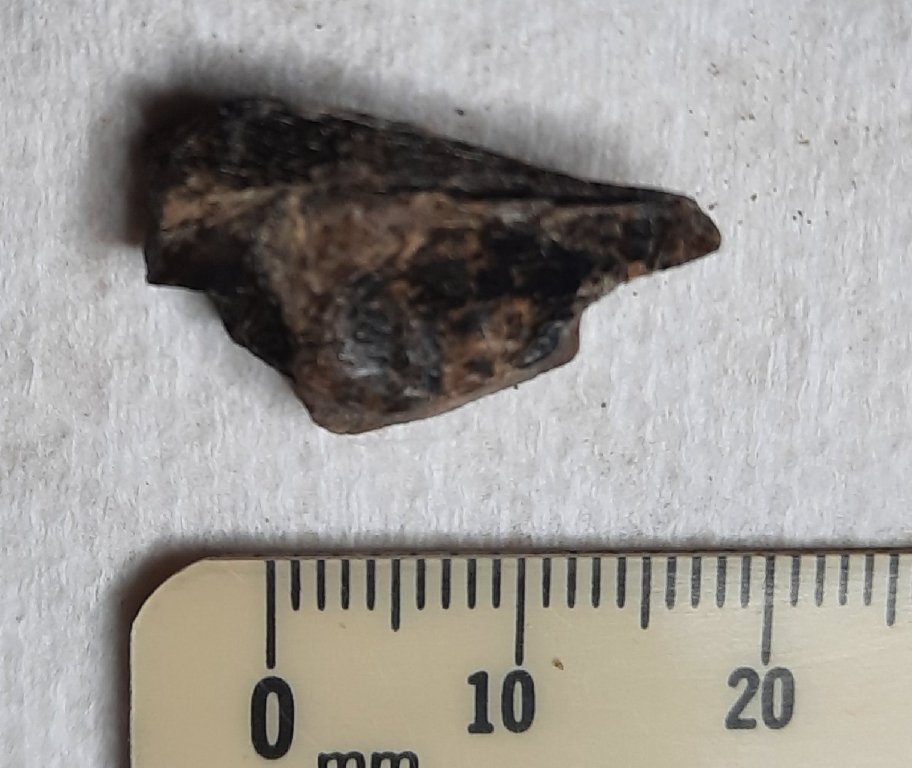


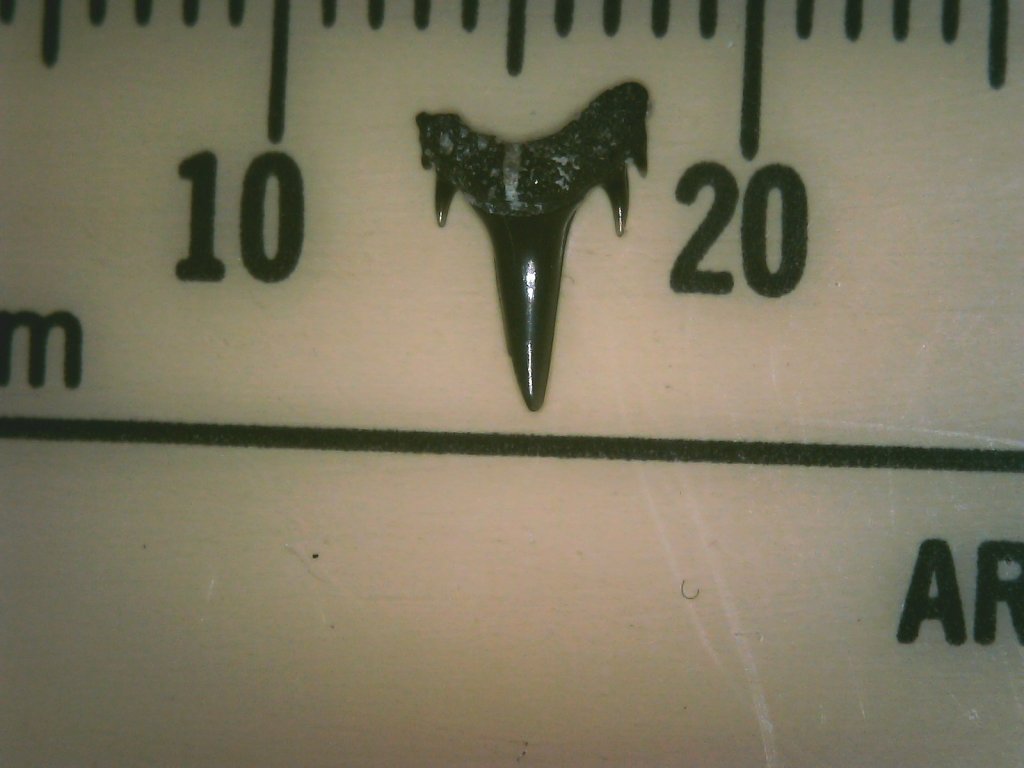

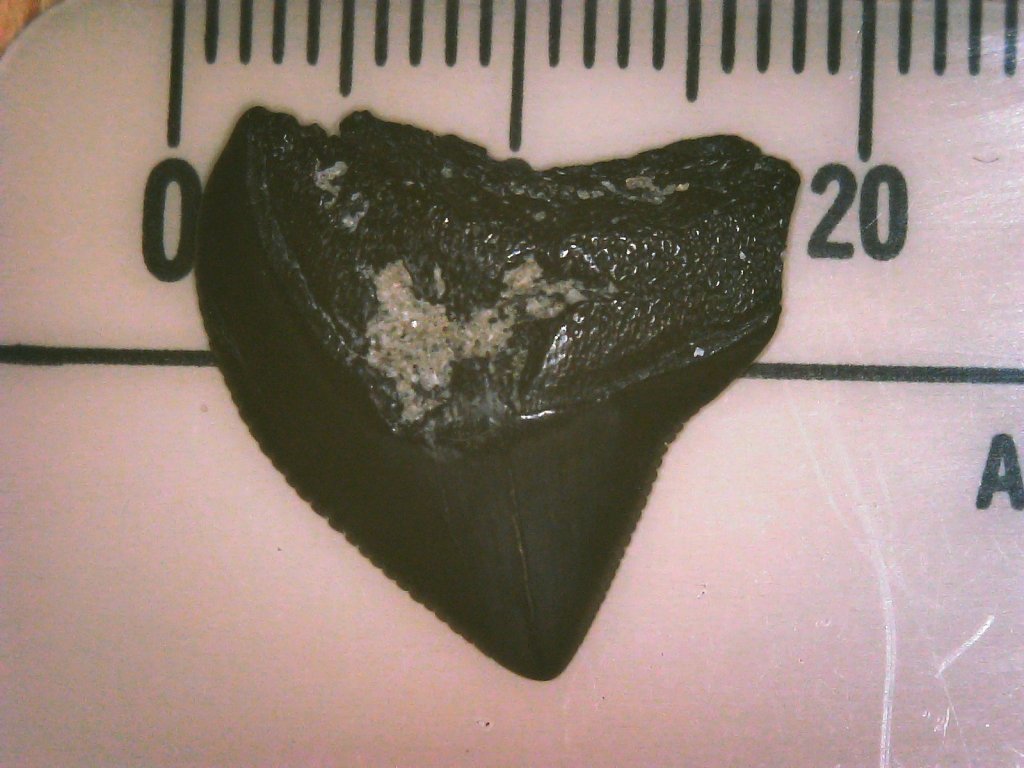



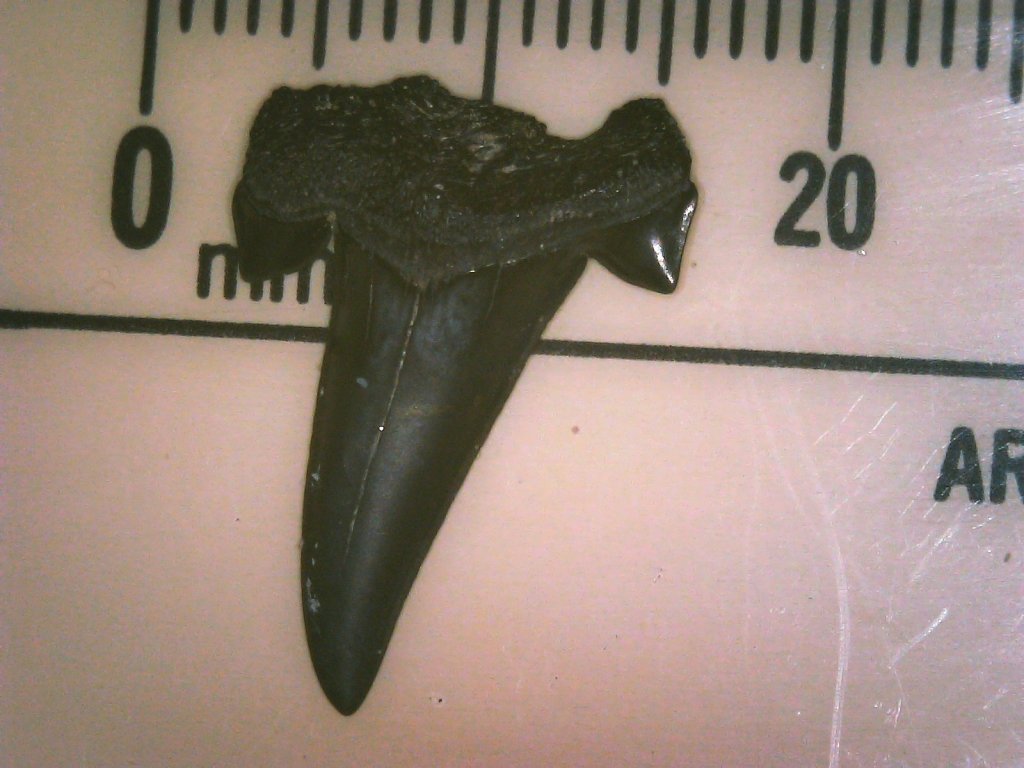
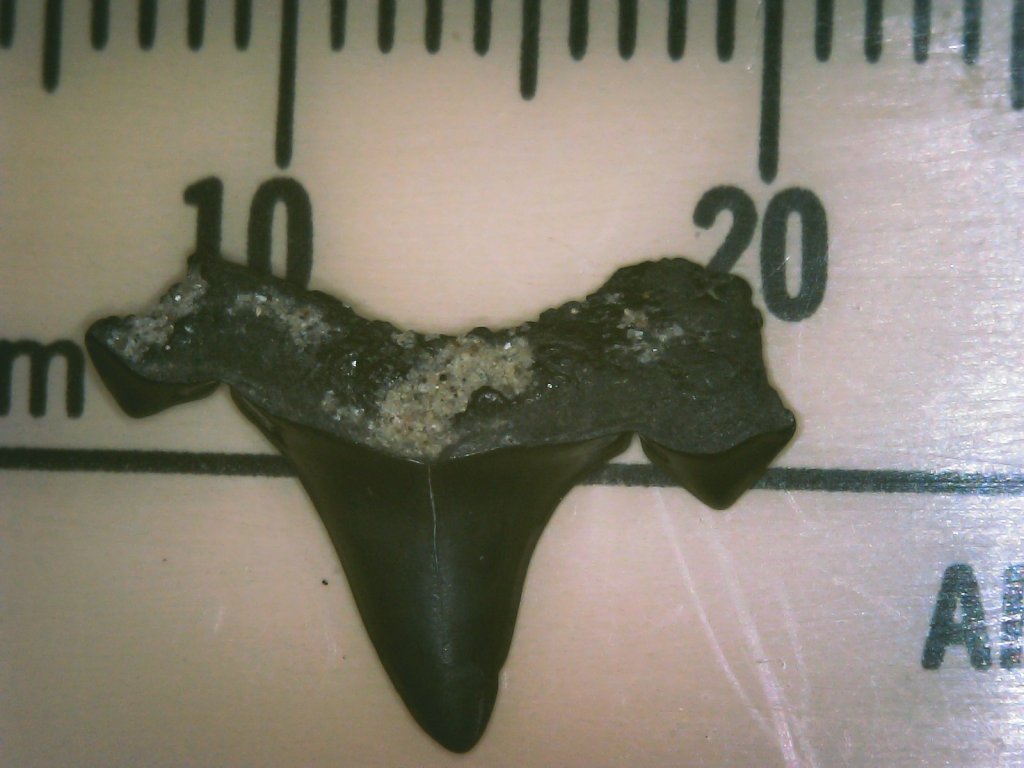


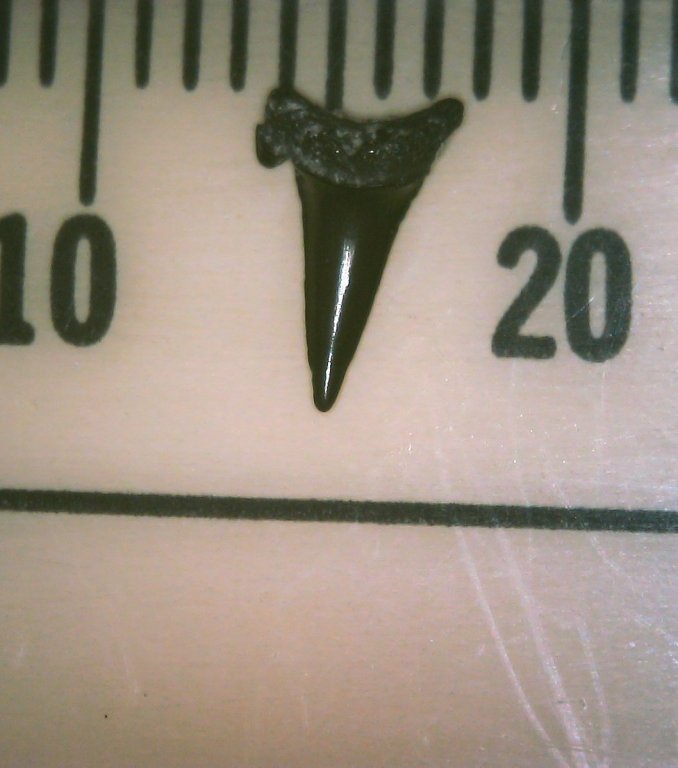
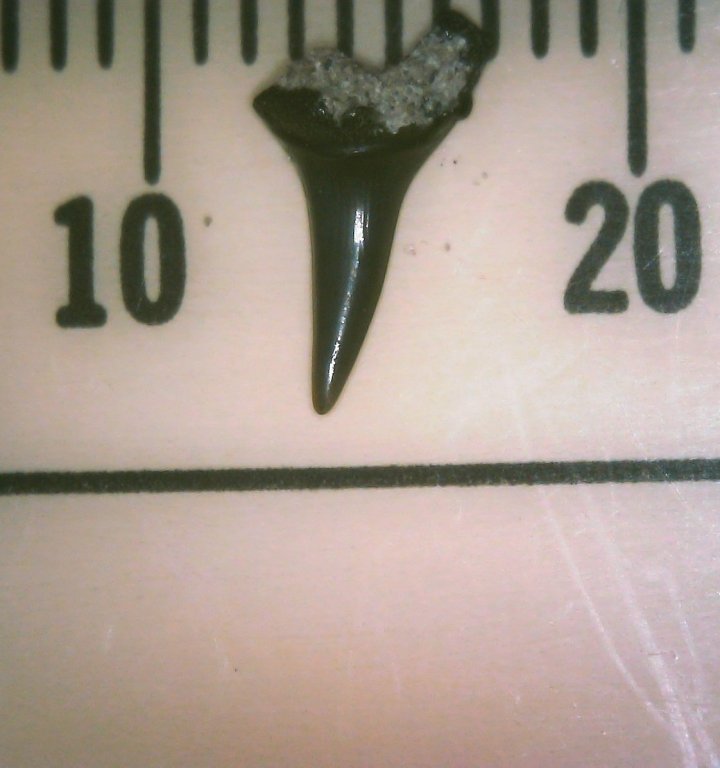


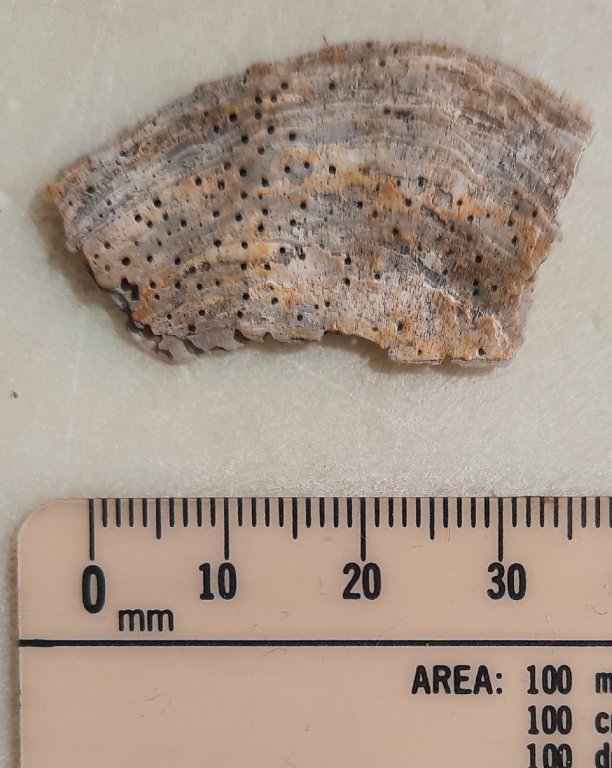



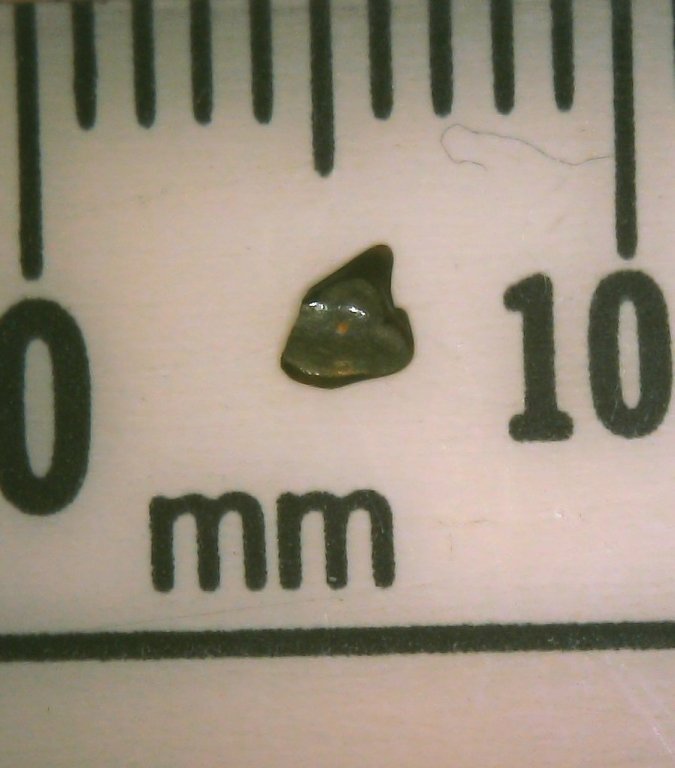
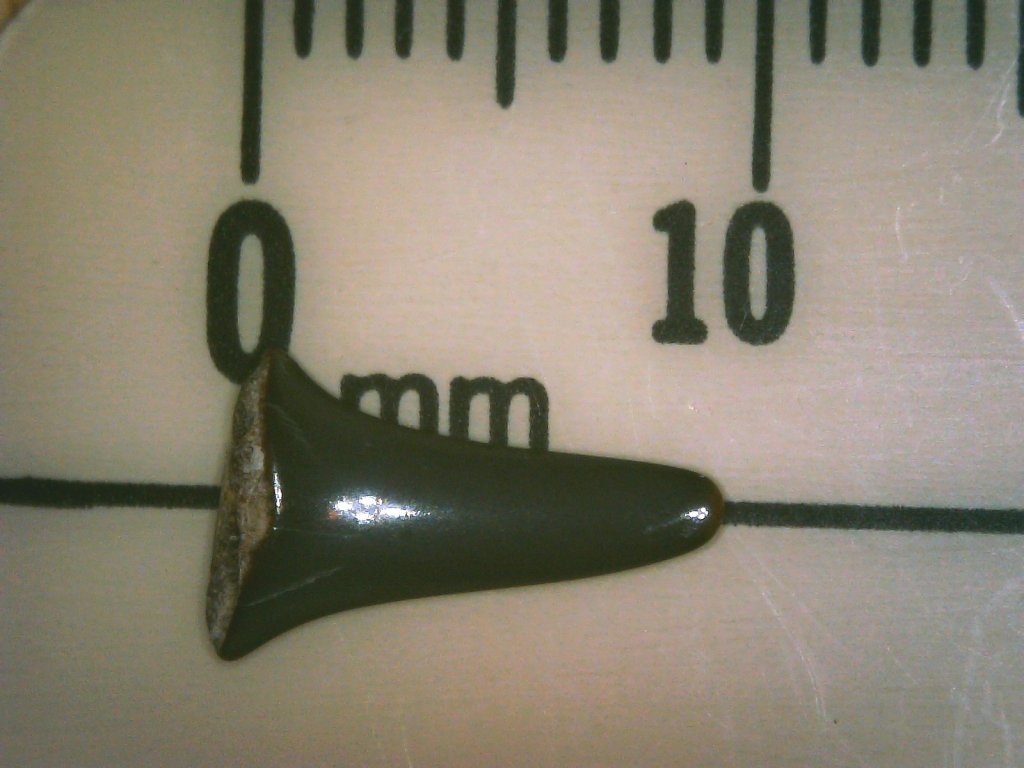
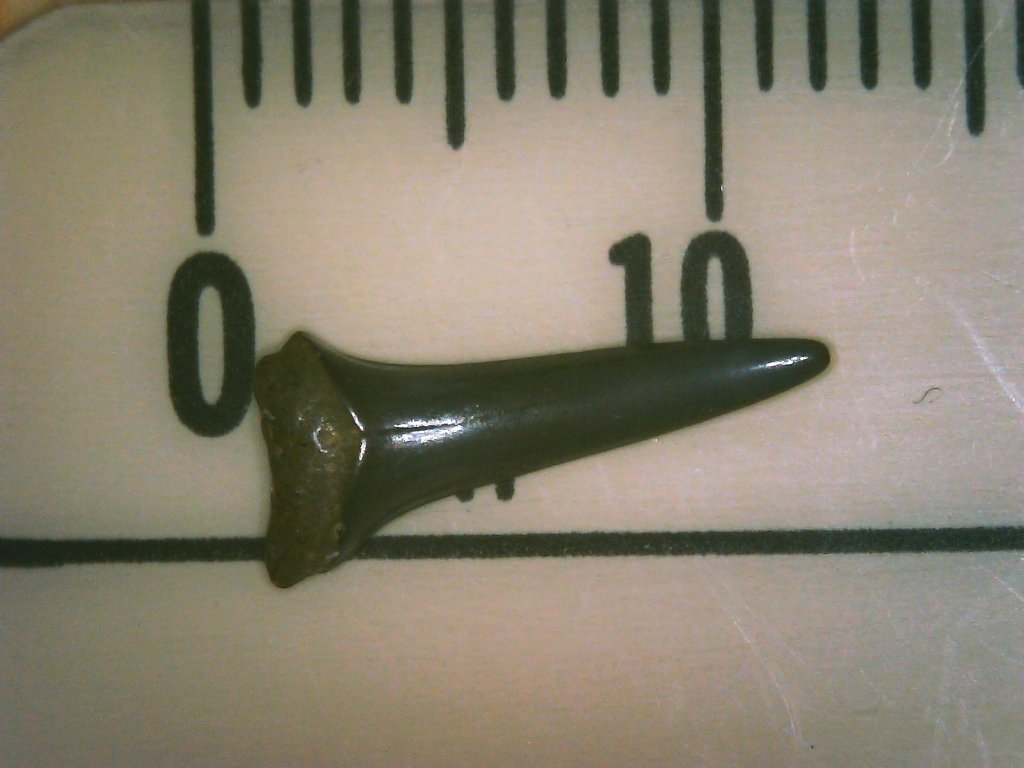

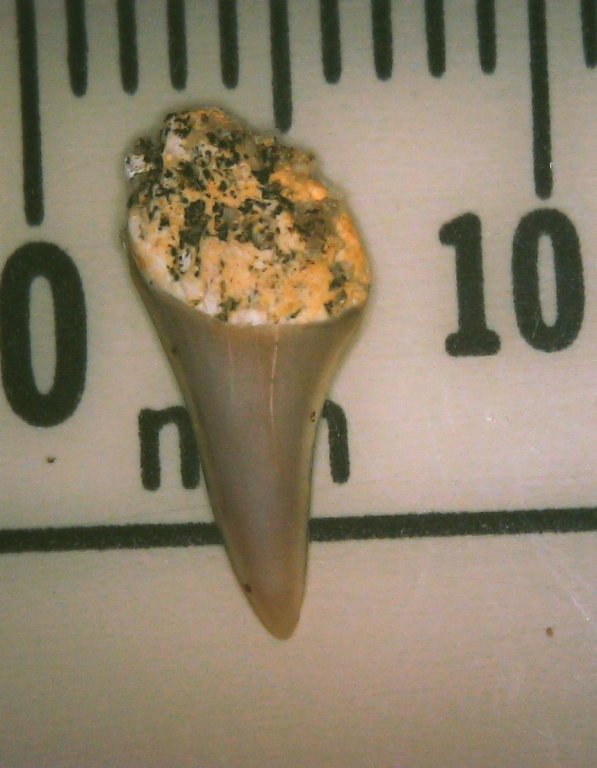
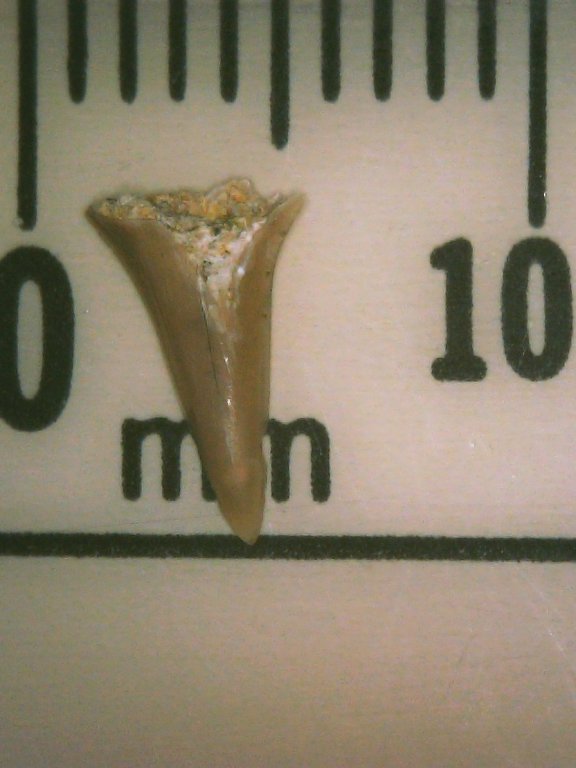
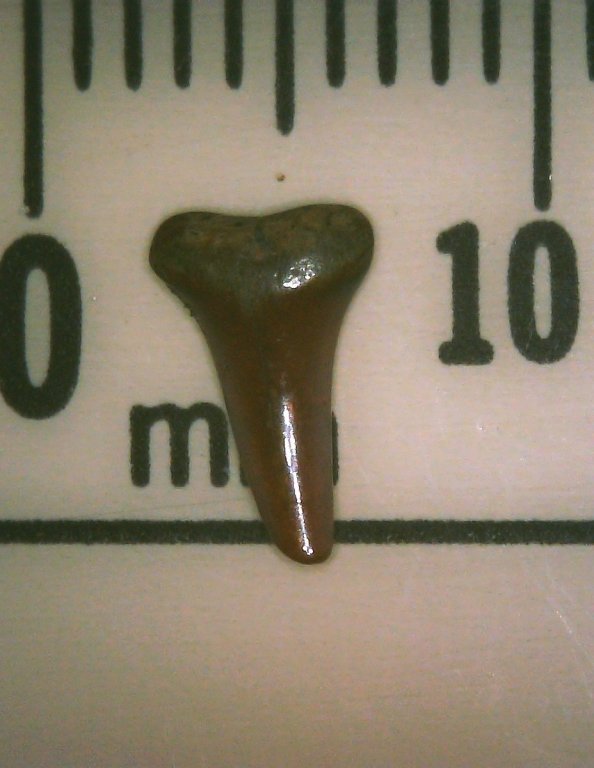
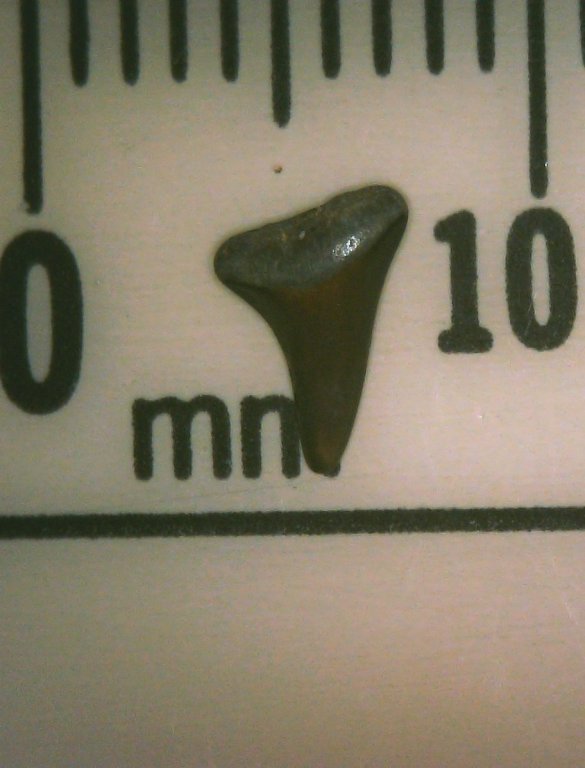
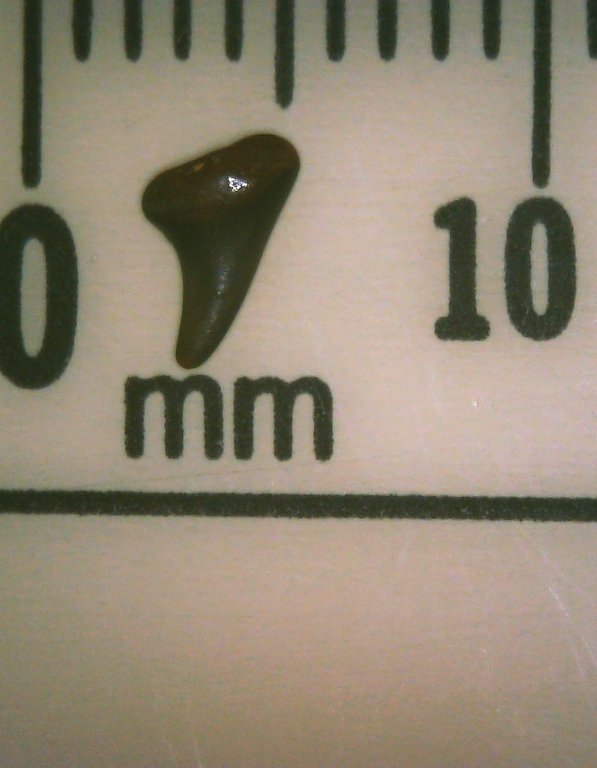
 >
>
